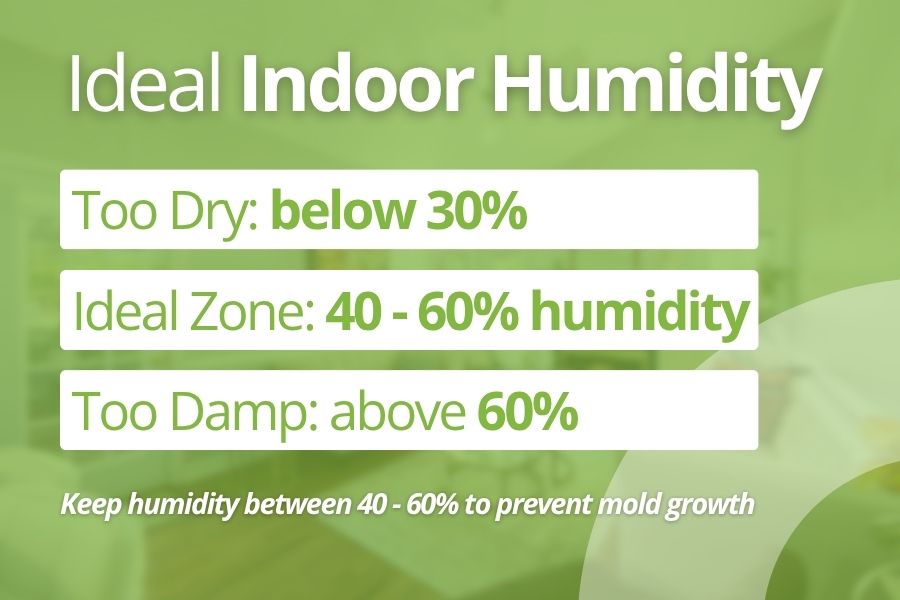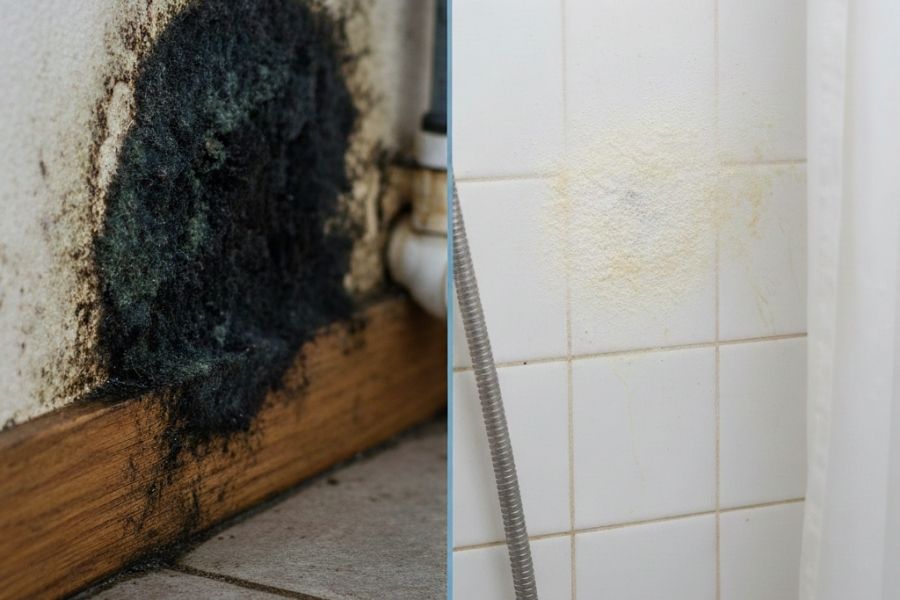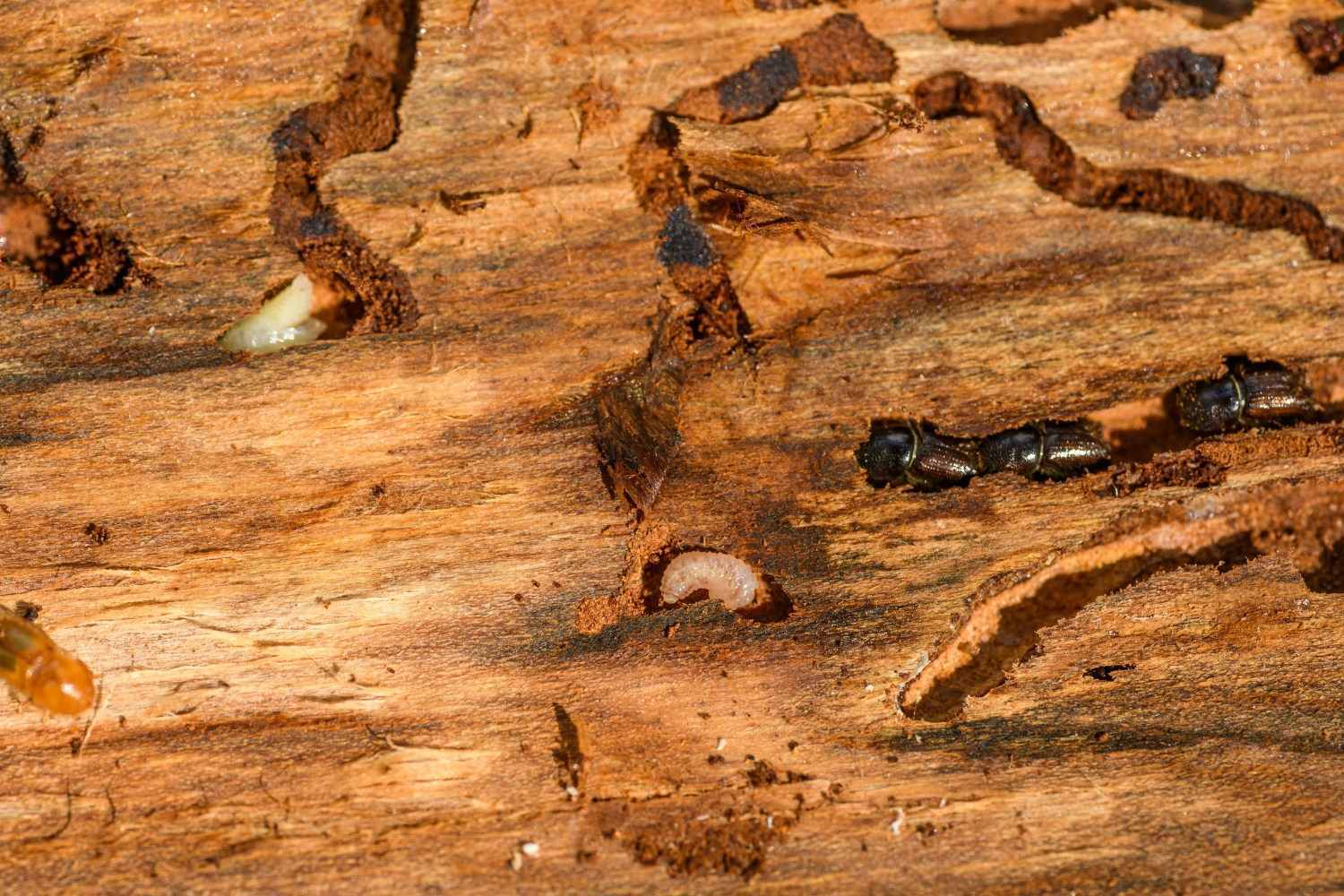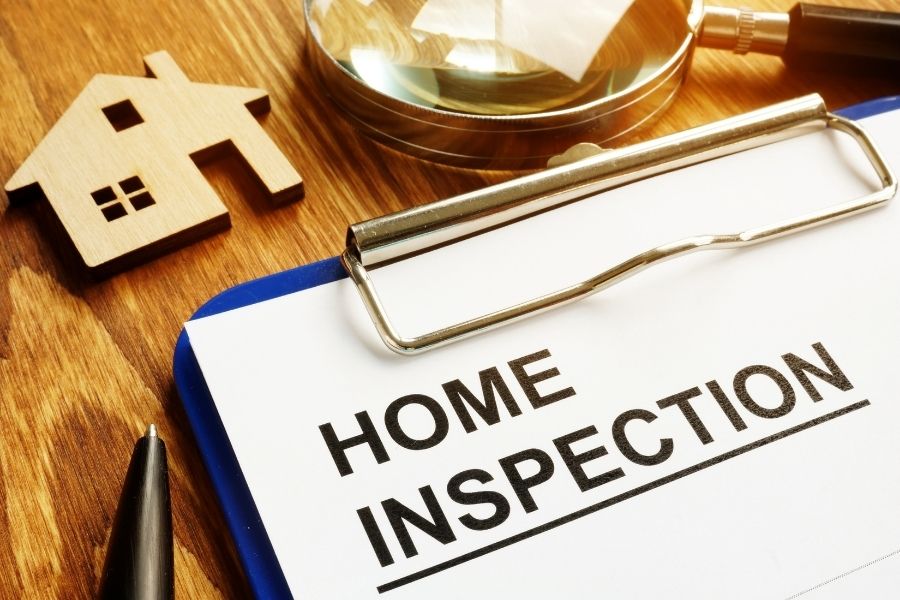For home inspectors, knowing the difference between mildew and mold is more than a matter of technical knowledge, it’s an essential part of protecting homeowners from hidden health and structural risks. These two fungi are among the most common issues found during home inspections, yet they are often mistaken for one another.
While mildew tends to be a surface-level nuisance, mold can cause deeper, more destructive problems that affect both the property and the people living in it. As an inspector, being able to recognize the signs of each, explain their differences to clients, and recommend appropriate next steps helps build trust and ensures healthier, safer homes.
This guide will break down the characteristics, causes, and risks of mildew and mold, while also providing practical insights you can share with homeowners during an inspection.

Table of Contents
ToggleWhat Is Mildew?
Mildew is a common type of surface fungus that grows in damp, warm, and poorly ventilated areas. It thrives on organic materials such as paper, fabric, and leather, but can also appear on hard surfaces like walls, tiles, or windowsills where condensation frequently forms.
Because mildew remains on the surface, it is usually easier to clean and less destructive than mold. However, its presence often indicates an underlying issue with humidity or ventilation that requires attention.
Key Characteristics of Mildew:
- Appears as a white, gray, or light brown powdery substance
- Grows flat and spreads evenly across surfaces
- Produces a musty, mild odor
- Easily removed with common household cleaners
Common Locations:
- Bathroom tiles and grout
- Shower curtains and bath mats
- Windowsills and frames
- Basement walls
- Laundry rooms or damp closets
While mildew itself is not usually dangerous, it serves as an early warning sign that indoor moisture levels are too high, a condition that can eventually lead to mold if ignored.
What Is Mold?
Mold, on the other hand, is more invasive and damaging. Unlike mildew, it grows beneath the surface of materials, feeding on organic matter like wood, drywall, and insulation. Once established, mold spreads rapidly and can cause significant property damage and serious health issues.
Key Characteristics of Mold:
- Appears in a range of colors including black, green, orange, or blue
- Has a fuzzy, slimy, or uneven texture
- Produces a strong, unpleasant odor
- Often requires professional remediation for safe removal
Common Locations:
- Attics and crawl spaces
- Inside HVAC systems and ducts
- On wood framing and insulation
- Behind walls or under flooring
- Around windows, sinks, or leaky pipes
According to the Environmental Protection Agency (EPA), even small mold infestations can worsen if left untreated. Because mold releases spores that spread through the air, it can quickly contaminate other parts of the home.
Main Differences Between Mildew and Mold
| Feature | Mildew | Mold |
|---|---|---|
| Appearance | White or gray, powdery | Black, green, or blue, fuzzy or slimy |
| Growth Type | Surface-level | Penetrates materials |
| Odor | Musty, mild | Strong, unpleasant |
| Health Impact | Mild respiratory irritation | Can cause allergic reactions and respiratory issues |
| Ease of Removal | Simple cleaning methods | May require professional remediation |
Although they are both fungi, mildew and mold behave very differently. Mildew is easier to clean and rarely causes permanent damage, while mold can compromise structural materials and lead to costly repairs.
Health Impacts: Why the Difference Matters
Both mildew and mold can affect indoor air quality, but mold poses a far greater health risk. Certain types of mold produce toxic compounds known as mycotoxins that can trigger allergic reactions, respiratory problems, and in some cases, chronic health conditions.
Potential Symptoms of Exposure:
- Sneezing, coughing, or nasal congestion
- Eye, throat, or skin irritation
- Fatigue or headaches
- Exacerbated asthma or allergy symptoms
For sensitive individuals, such as children, the elderly, or those with weakened immune systems, prolonged mold exposure can lead to more serious complications. This is why inspectors play a crucial role in identifying mold early, before it becomes a major health hazard.
How Inspectors Identify Mildew vs. Mold
Professional home inspectors use a combination of visual assessment, moisture detection tools, and testing methods to confirm the presence of mildew or mold.
1. Visual Inspection
The first step is a thorough visual check. Mildew typically appears lighter and more uniform, while mold tends to look patchy, fuzzy, and darker. Inspectors should also note the spread pattern and whether the growth seems to penetrate the surface.
2. Odor Assessment
Mold often produces a strong, earthy, or damp odor, whereas mildew smells more musty and mild. In some cases, smell alone can point to hidden mold behind walls or flooring.
3. Moisture Mapping
Using tools such as infrared thermography cameras and moisture meters helps identify underlying dampness, leaks, or temperature differentials that encourage fungal growth.
4. Air and Surface Sampling
When the type of growth is unclear, inspectors may recommend lab testing to confirm whether it’s mold and to identify the specific species present. This information helps determine the level of risk and the appropriate remediation plan.
Root Causes of Mildew and Mold Growth
Understanding the environmental factors that cause mildew and mold is key to prevention and accurate reporting. Both thrive in similar conditions, moisture, warmth, and poor ventilation, but they may originate from different sources.
Common Causes Include:
- Leaking pipes or plumbing fixtures
- Poor roof or gutter maintenance
- Condensation from HVAC systems
- Flooding or water intrusion
- Inadequate ventilation in kitchens and bathrooms
- Humid climate or seasonal dampness
During inspections, note any visible water stains, musty smells, or condensation buildup, as these are telltale signs of potential fungal growth. Addressing the root cause helps homeowners prevent recurrence after cleaning or remediation.
The Importance of Moisture Control
Moisture is the single most important factor in mold prevention. Without it, fungal spores cannot grow or reproduce. Educating homeowners on moisture control strategies is one of the most valuable services an inspector can offer.
Practical Moisture Control Tips:
- Maintain indoor humidity below 50% with a dehumidifier
- Use exhaust fans while cooking or showering
- Ensure gutters and downspouts direct water away from the home
- Fix plumbing leaks immediately
- Clean and dry any spills or water-damaged areas within 24 – 48 hours
- Improve insulation to reduce condensation
When inspecting, document any moisture-prone areas and recommend routine maintenance to keep humidity levels under control.

Mildew and Mold Testing Methods
In addition to visual inspection, several testing methods help confirm the presence and severity of mold:
1. Air Sampling
This test collects airborne spores to determine if indoor air quality has been compromised.
2. Surface Sampling
A swab or tape lift is used to gather a sample from visible growth for lab analysis.
3. Bulk Sampling
Inspectors may collect small material samples (like drywall or insulation) from affected areas to check for deeper contamination.
While home inspectors often identify visible mold during inspections, laboratory testing provides definitive results for homeowners who require documentation for remediation, insurance claims, or peace of mind.
Prevention and Maintenance Tips for Homeowners
Helping clients understand preventive maintenance is key to long-term success. After all, remediation is only effective if the root cause is fixed.
Homeowner Tips:
- Keep bathrooms and laundry areas well ventilated
- Regularly inspect plumbing and rooflines for leaks
- Clean HVAC filters and ducts frequently
- Use mold-resistant paint or materials in damp areas
- Store belongings in dry, ventilated spaces
- Check basements and attics after heavy rain
Preventing mildew and mold growth is far easier, and more cost-effective than repairing the damage they cause.
When to Recommend Professional Remediation
While minor mildew problems can usually be cleaned with a household cleaner or diluted bleach solution, large or persistent mold infestations should always be referred to a certified remediation specialist.
Recommend professional help when:
- The affected area exceeds 10 square feet
- Mold is growing behind walls, under floors, or inside HVAC systems
- There is visible damage to drywall, insulation, or wood
- Occupants report health symptoms linked to mold exposure
Certified professionals have the proper equipment, safety gear, and containment procedures to remove mold safely and prevent it from returning.
Educating Clients: Communication Tips for Inspectors
Home inspectors often serve as the first line of defense against indoor mold problems. The way you communicate findings can greatly influence a client’s response.
Helpful Communication Practices:
- Use clear, simple terms. Avoid overly technical language when explaining what you’ve found.
- Focus on solutions, not fear. Emphasize that most mold problems are manageable with the right steps.
- Provide visual documentation. Photos help clients understand the extent of the issue.
- Recommend professional partners. Build relationships with local remediation and air quality experts for reliable referrals.
By guiding clients with confidence and clarity, inspectors position themselves as trusted advisors rather than just evaluators.
The Role of Regular Home Inspections
Routine inspections play a critical role in preventing mold and mildew from becoming serious problems. Annual or seasonal inspections can help identify leaks, poor ventilation, and moisture buildup early.
Encourage homeowners to schedule inspections after:
- Major storms or flooding
- Plumbing or roof repairs
- Long periods of high humidity
- Before buying or selling a home
Consistent follow-ups ensure that small issues never develop into major repairs or health hazards.
Conclusion
For home inspectors, understanding the difference between mildew and mold is more than a technical requirement, it’s part of maintaining trust, professionalism, and safety in every inspection.
Mildew is typically a warning sign, while mold represents a deeper, more serious problem that can impact both property and health. By identifying the type, cause, and extent of fungal growth early, inspectors help homeowners act quickly and effectively.
Every recommendation you make, from ventilation improvements to professional remediation, adds value to your service and reinforces your role as a knowledgeable expert in home safety.
A careful eye, the right tools, and good communication can make all the difference in protecting both the home and the people inside it.
Don’t wait for mold to spread, stop it at the source. Contact NISI Evansville Inspections for expert insight, moisture detection, and guidance you can trust.



